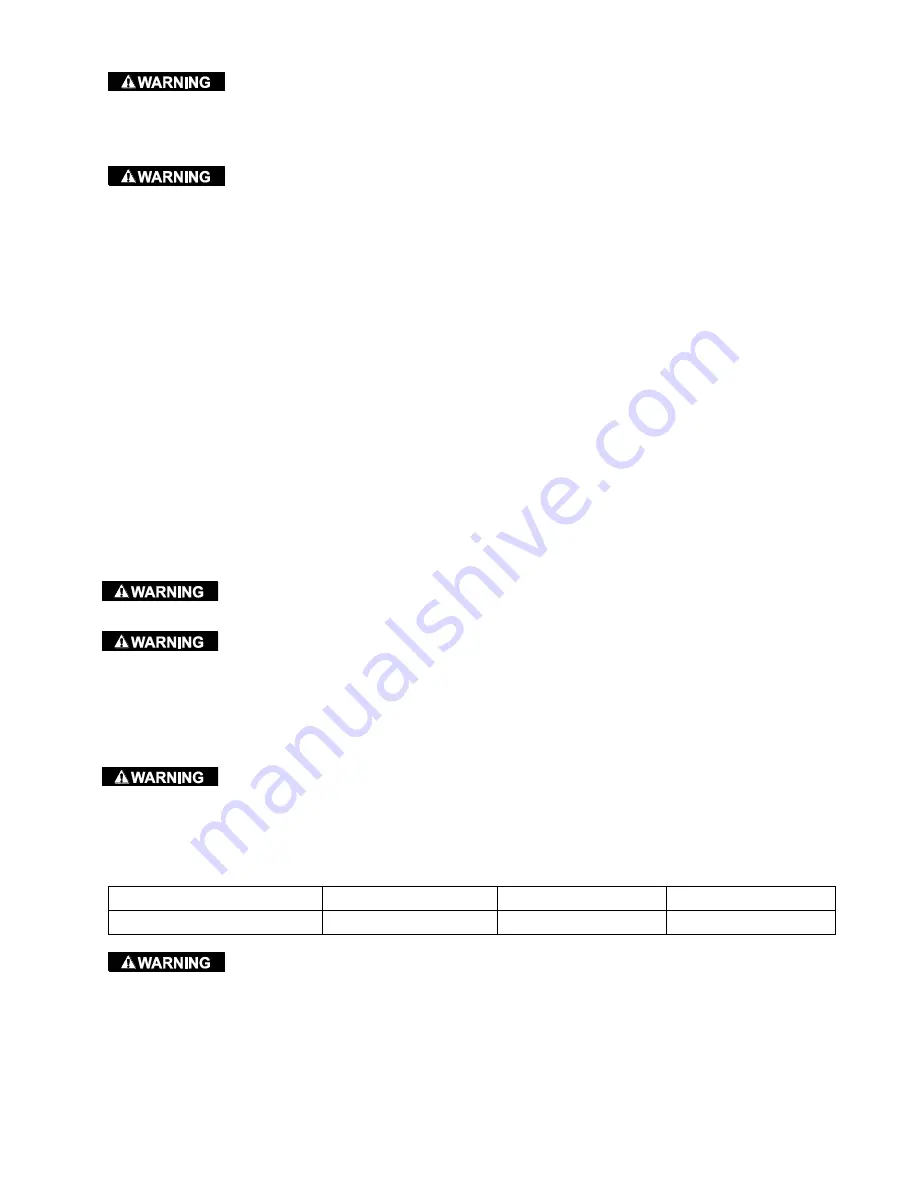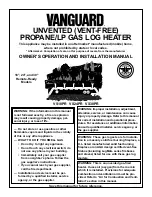
Form 44201360
10
Oct 2019
This heater can be equipped with a heat shield to reduce the clearances to combustibles
towards the ceiling. Due to the variety of possible heater mounting angles the heat shield must be mounted in the
correct location to match the heater mounting angle. See section 13.0 heat shield installation.
Approved installation angles are 0
°
, 15
°
, 30
°
, 45
°
and 60
°
degrees with the heat shield installed.
Certain materials or objects, when stored under the heater, will be subjected to radiant heat and
could be seriously damaged. Observe the Minimum Clearances to Combustibles listed in the manual and on the
heater at all times.
For maximum safety the building must be evaluated for hazards before installing the heater system.
Examples include, but are not limited to:
Gas and electrical lines
Combustible and explosive materials
Chemical storage areas
Areas of high chemical fume concentrations
Provisions for accessibility to the heater
Adequate clearances around the openings
Combustion and ventilating air supply
Vehicles parking areas
Vehicles with lifts or cranes
Storage areas with stacked materials
Lights
Sprinkler heads
Overhead doors and tracks
Dirty, contaminated environment
Clearances to combustibles are defined as a surface temperature of 50°C above ambient temperature.
Minimum clearances shall be measured from the outer surfaces of the heater or heat shield if
installed, as shown in the diagrams for the different installation positions.
Fire sprinkler heads must be located at an appropriate distance from the heater. This distance
may exceed the published clearance to combustibles. Certain applications will require the use of high temperature
sprinkler heads or relocation of the heaters.
Sprinkler systems containing propylene glycol or other flammable substances are not to be used in conjunction with
this heater without careful consideration for and avoidance of potential fire or explosion hazards. For further
information consult the authority having jurisdiction. Always observe applicable state and local codes.
The stated clearance to combustibles represents a surface temperature of 50ºC above room
temperature. Building materials with a low heat tolerance (such as plastics, vinyl siding, canvas, tri-ply, etc.) may be
subject to degradation at lower temperatures. It is the installer’s responsibility to assure that adjacent materials are
protected from degradation.
See below the possible surface temperature at the clearance to combustible distance for different ambient
temperatures within the heated space.
Ambient Temperature
20.0°C
17.5°C
15.0°C
Surface Temperature
70.0°C
67.5°C
65.0°C
Clearances to combustibles are posted on the heater. In areas used for storage of combustible
materials where they may be stacked below the heater the installer must post signs that will “specify the maximum
permissible stacking height to maintain the required clearances from the heater to combustibles.” Space-Ray
recommends posting these signs adjacent to the heater thermostat or other suitable location that will provide
enhanced visibility.







































